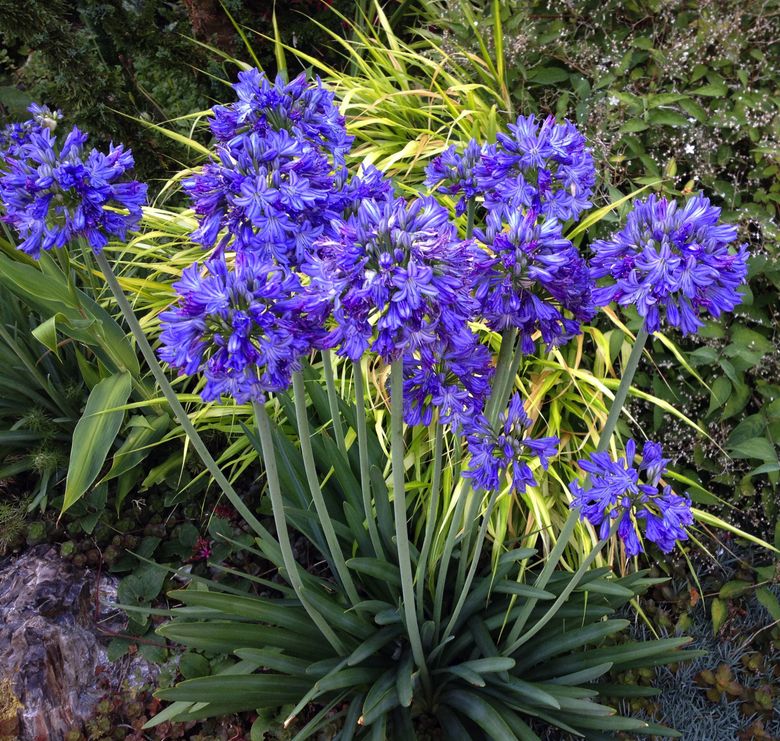Agapanthus Care Tips for Lush and Vibrant Flowers
Agapanthus Care Tips for Lush and Vibrant Flowers
Blog Article
Understanding the Art of Agapanthus Care: Crucial Steps for Healthy Growth and Vibrant Blossoms
In the world of horticulture, the growing of agapanthus stands as a fulfilling undertaking for those that seek to nurture these stylish flowering plants. From selecting the ideal selection to understanding pruning techniques, the trip in the direction of cultivating thriving agapanthus plants is diverse and holds the vital to opening the full capacity of these herb gems.

Selecting the Right Agapanthus Variety

When choosing the right Agapanthus selection for your garden, consider factors such as environment suitability, blossom color, and development routine. Additionally, take into consideration the climate in your region to guarantee the Agapanthus variety you choose can thrive in your specific problems. Comprehending the development practice of various Agapanthus varieties is essential for correct positioning within your yard.
Suitable Planting Problems
Thinking about the optimum ecological requirements is necessary for effective Agapanthus growing. Agapanthus plants are delicate to cool temperatures and ought to be protected from frost during wintertime months.
To make sure healthy growth and vivid blooms, plant Agapanthus bulbs at a depth of concerning 2-4 inches and area them 8-12 inches apart. Mulching around the base of the plants helps retain wetness and reduces weed development.
Watering and Fertilizing Tips
Preserving proper dampness degrees and offering necessary nutrients are crucial elements in the care routine for Agapanthus plants. It is important to strike a balance when it comes to sprinkling Agapanthus. If overwatered, these plants choose continually damp dirt however are susceptible to root rot. Throughout the expanding season, water deeply once a week, making certain the soil is well-draining to stop waterlogging. In hotter climates or during periods of drought, even more frequent watering might be necessary to keep the soil equally moist. Nonetheless, decrease watering in the winter to avoid waterlogged conditions.
Fertilizing Agapanthus is essential for promoting healthy growth and respected blooms. Apply a balanced fertilizer, such as a 10-10-10 formula, in the early springtime as brand-new development arises. By complying with these watering and fertilizing ideas, you can guarantee Continue your Agapanthus click to read plants prosper and create dynamic, lasting flowers.
Pruning Techniques for Agapanthus
Trimming Agapanthus plants at the ideal times and with appropriate techniques is essential for preserving their wellness and promoting ideal development and flowering. The perfect time to trim Agapanthus is in late wintertime or early spring before brand-new growth arises.
Deadheading spent flowers can additionally reroute the plant's energy into creating more blossoms instead than establishing seeds. If you want to gather seeds for propagation, leave some flowers to completely dry and fully grown on the plant.
Bear in mind to utilize tidy, sharp tools to make exact cuts and decrease the risk of introducing illness. Agapanthus. Normal pruning will help keep your Agapanthus looking healthy and neat while ensuring an abundant display screen of lovely blooms
Managing Common Insects and Conditions
After ensuring appropriate trimming methods for Agapanthus, it is necessary to deal with typical insects and diseases that can influence the health and wellness and vitality of these plants. Agapanthus plants are typically sturdy yet can still come down with specific problems. One common insect that influences Agapanthus is the Agapanthus gall midget. This tiny, orange fly lays its eggs in the foliage, causing distorted development and flower buds that stop working to open up. To fight this pest, trim and damage any kind of try here affected plant components and think about utilizing insecticidal soap.
Additionally, Agapanthus plants can experience from origin rot if they are grown in inadequately draining pipes soil. By being alert and taking punctual activity against pests and diseases, you can help your Agapanthus plants grow and produce lively blossoms. Agapanthus.

Final Thought
To conclude, mastering the art of agapanthus treatment entails choosing the best range, giving ideal planting conditions, appropriate watering and feeding, ideal trimming techniques, and attending to common insects and conditions. By complying with these vital actions, you can ensure healthy growth and vivid blossoms for your agapanthus plants. Bear in mind to on a regular basis check and maintain your plants to advertise their overall well-being and durability.
To guarantee healthy development and vivid blooms, plant Agapanthus light bulbs at a depth of regarding 2-4 inches and area them 8-12 inches apart. By adhering to these watering and fertilizing ideas, you can ensure your Agapanthus plants flourish and create lively, resilient flowers.
One usual parasite that influences Agapanthus is the Agapanthus gall midget. Furthermore, Agapanthus plants can suffer from origin rot if they are grown in improperly draining pipes soil. By adhering to these vital steps, you can ensure healthy and balanced development and vibrant flowers for your agapanthus plants.
Report this page